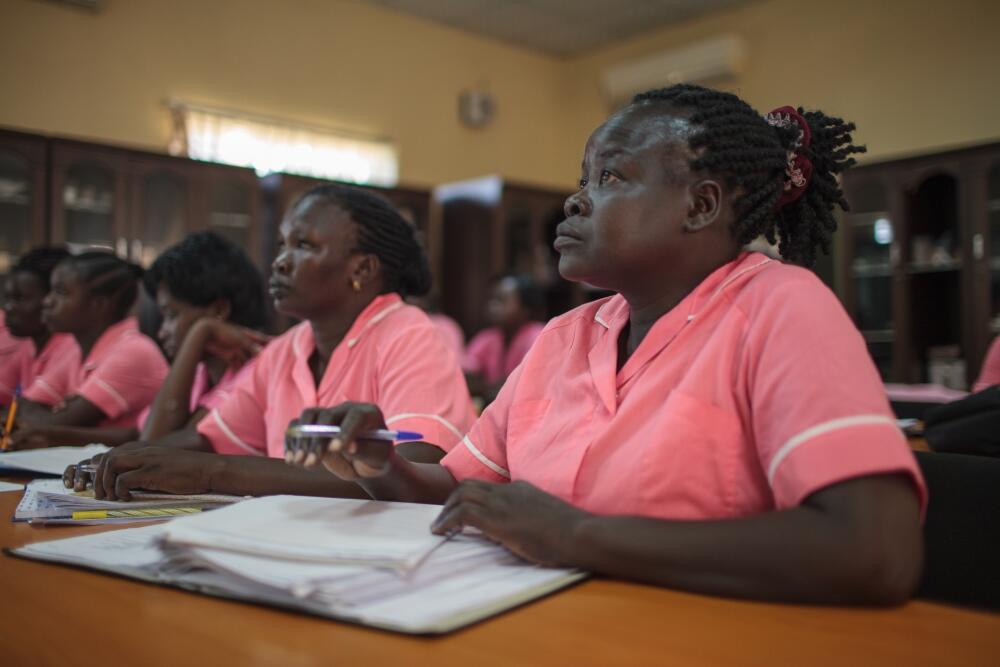Johannesburg, 20 September 2017 – An estimated 303,000 maternal deaths occurred globally in 2015[1]. Nearly all of these deaths were preventable, and all of them occurred in low and middle income countries. In the same year, 2.7 million neonatal deaths and 2.6 million stillbirths occurred across the world in predominantly low and middle income countries, according to a report completed by the United Nations Maternal Mortality Estimate interagency group[2].
Today’s launch of the State of Midwifery Workforce in East and Southern Africa report explores how a well-trained, knowledgeable and effective health-care workface can deliver lifesaving interventions in places that are often remote and have poor infrastructure. Such interventions contribute to the reduction of maternal deaths not only in the region, but across the globe.
“A well trained, regulated and motivated human resource for Sexual and Reproductive Maternal, Newborn and Adolescent Health (SRMNAH) is a cornerstone of realizing this ambitious target of ensuring every woman, girl and boy receives the effective SRMNAH services they need,” said Dr. Julitta Onabanjo, UNFPA Regional Director for East and Southern Africa.
“For this to happen, it is not only workforce numbers that should be tracked; we should be able to monitor and track accessibility (fair distribution), acceptability (culturally sensitive respectful care) and quality (standard and regulated) of care. The state of midwifery report we are launching today sheds light exactly those issues,” she said.
One of the milestone achievements in the region was the huge reduction in the Maternal Mortality Ratio (MMR) from 913 maternal deaths per 100,000 live births in 1990 to 455 in 2015, representing a 50 per cent reduction, compared to 44 percent globally[3].
While 21 countries in the East and Southern Africa region participated in this study, the report indicates some unique contextual issues related in particular to the SRMNAH workforce of South Africa[4].
South Africa is the only country in the region that is able to successfully provide SRMNAH services as 100 per cent of its health-care workforce is available. South Africa has an adequate number and mix of skilled health-care providers that can cover 100 per cent of the SRMNAH need.
However, the reduction in South Africa’s maternal mortality ratio has stagnated more recently due to its high number of AIDs-related indirect maternal deaths (32 per cent). This means that, on average, 4 mothers die in the country each day due to complications related to pregnancy and childbirth. However, this number has the potential to be reduced to zero – if midwives and other health-care providers are deployed effectively and supported consistently.
UNFPA East and Southern Africa continues to work with governments, health-care partners and civil society to strengthen the capacity of midwives and health-care providers.
***
For further information, please contact:
Adebayo Fayoyin, Regional Communications Adviser, UNFPA East and Southern Africa Regional Office: 011 6035308; 079 5170320; fayoyin@unfpa.org
UNFPA: Delivering a world where every pregnancy is wanted, every childbirth is safe and every young person’s potential is fulfilled.
[1] Source: UN Maternal Mortality Estimate Interagency Group 2015 report.
[2] Source: UN Maternal Mortality Estimate Interagency Group 2015 report
[3] Source: UN Maternal Mortality Estimate Interagency Group 2015 report
[4] Source: South Africa Demographic and Health Survey 2016



